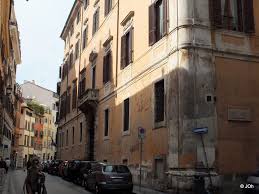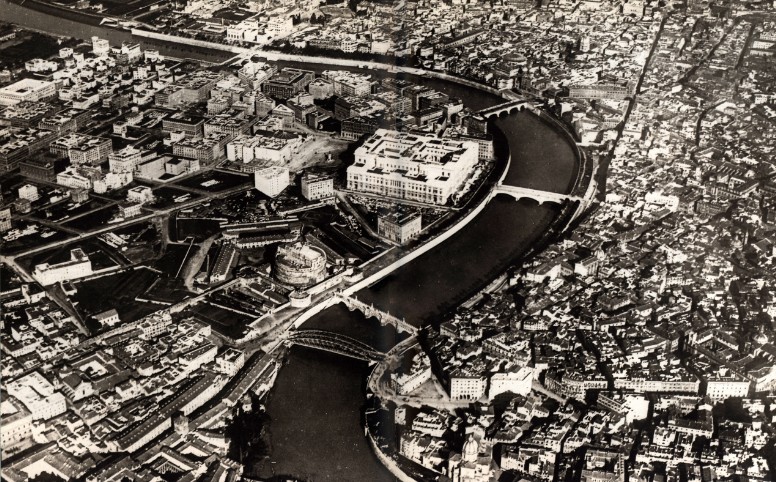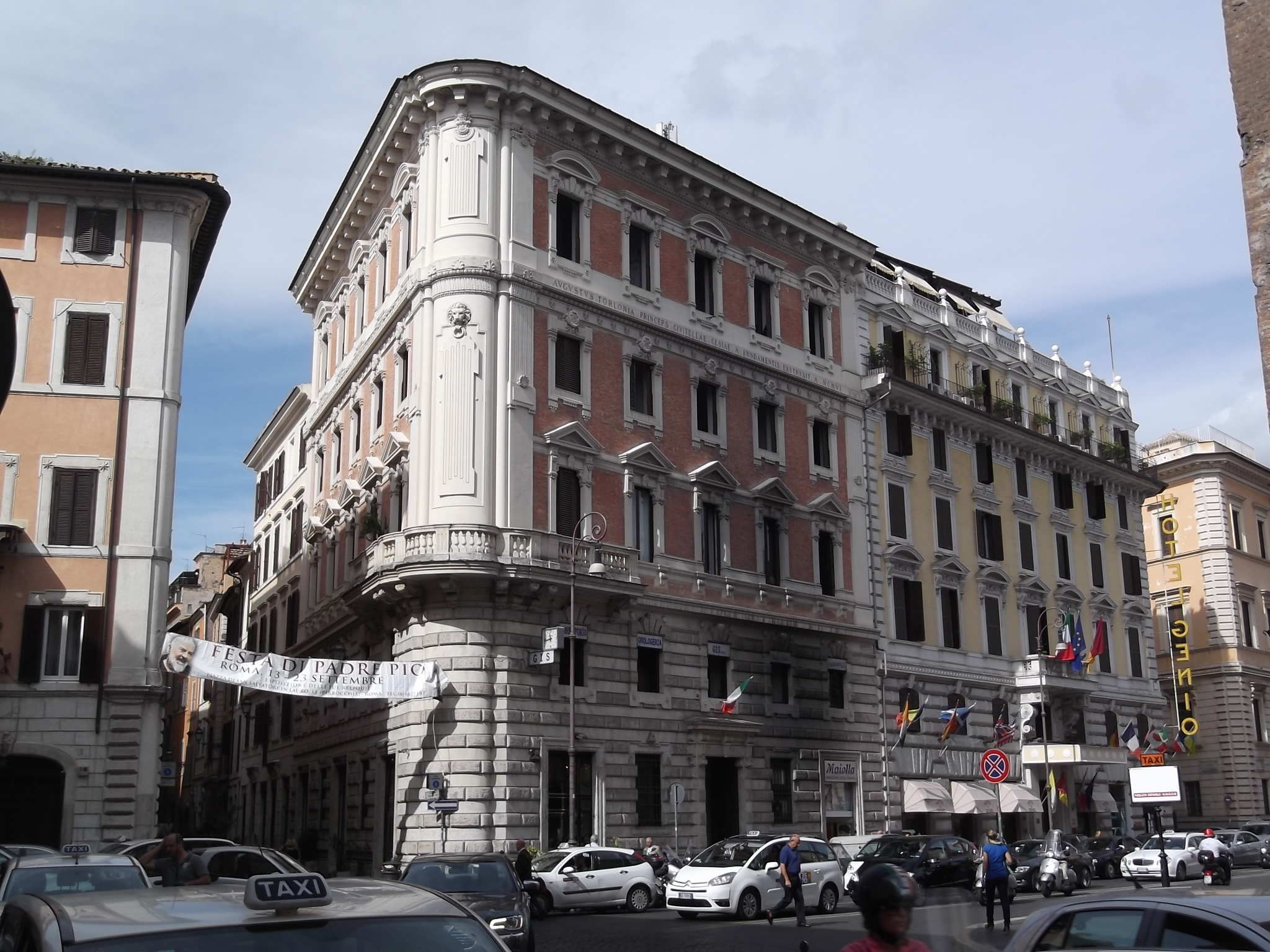


The name derives from Ponte Sant'Angelo, also depicted on the coat of arms and actually belonged to the district until the establishment, in the 16th century by Pope Sixtus V, of the Borgo district.

In ancient Rome the district was included in the IX Augustan region Circus Flaminius, that is, it was considered part of the Campo Marzio. The current Sant'Angelo bridge takes up the ancient Elio bridge, built by the emperor Hadrian to connect his mausoleum to the rest of the city. Another bridge was built by Nero and was called triumphal because the Via Trionfale (later called Sacra) passed through it, which was made to cross by the armies returning from the battles.

This bridge was later called pons vaticanus, because it connected the Vatican area to the rest of the city, and pons ruptus (broken bridge), because it was already in ruins in medieval times. In ancient Rome in this area there was a port that was used to bring the materials necessary for the construction of the great works in the Campo Marzio.

Life in the district continued uninterrupted even during the Middle Ages and the modern period, and this virtually wiped out all remnants of ancient Rome in the area. The fact that many people were moving from the areas in the hills, where there was no water, to the banks of the Tiber, where they survived by drinking the water of the river, also contributed to this. Furthermore, the district was located at the end of the Sant'Angelo bridge, and here all the major roads leading to San Pietro converged, so there was also a continuous influx of pilgrims, which enriched the economy of the area: there were inns , taverns, trade in sacred objects, etc.

Until the time of Pope Sixtus V, the district also included a portion beyond the Tiber, which was then separated to create the Borgo district. During the 1500s the district had great importance above all for its road network, and for this reason large palaces of both aristocratic and merchant families were built following projects by great artists. This contributed to greatly embellish the district which soon became famous.

A rather frequent sight in the district was a small procession led by a veiled person dressed in black who carried a crucifix on his shoulder. On a chariot there was a chained condemned man who was constantly kissing another image of Jesus. The goal of the procession was the current square of Ponte Sant'Angelo where a gallows was placed to hang the condemned man.

Although Ponte was a rich and luxuriant area, it was also the one most affected by the frequent floods of the Tiber.

The appearance was completely transformed after Rome became the capital in 1870: the walls of the Tiber were built to stop the floods of the river, as well as new bridges to connect the Vatican area and Prati to the rest of Rome. All the alleys that led to the bank of the Tiber have disappeared to make way for the wide road along the Tiber, but the typical character of the district is still visible further inside.
District V Bridge
Address: Corso Vittorio Emanuele II, 00186
Phone:
Site:
https://www.romasegreta.it/ponte.htmlLocation inserted by
CHO.earth